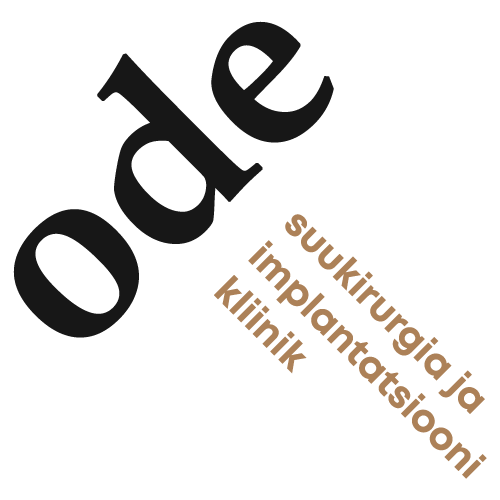Treatment with braces is usually started after all teeth have changed. Braces are glued onto the tooth with a material similar to dental filling material. Gluing the braces does not hurt. Sometimes rings are placed around the posterior teeth. About a week before the rings are cemented, separators are placed between the teeth. After gluing the braces, teeth become tender only after a couple hours. In the first days chewing is uncomfortable and the braces and the arch can rub the mucosa. Brace wax applied to cover interfering parts of the brace system helps against friction. Each activation is followed by a slight toothache. Analgesics can be used in such cases if necessary.
Treatment of both arches with braces lasts 1.5 to 2 years on average.
It is not recommended to eat sticky or doughy candy, like gummies or chewing gum, with braces. Hard carrots, apples are recommended to be cut into smaller pieces before eating. Foods high in acid and sugar content should also be avoided to reduce risk of caries. A suitable diet can prevent loosening of braces, which will to an increase in treatment time, and prevent accumulation of pigment and formation of caries.
Treatment of both arches with braces lasts 1.5 to 2 years on average.
Hygiene
In addition to the usual toothbrush, additional tools, e.g. interdental brushes, should be used to clean under the arch and around the braces. It is important to clean plaque off the tooth neck on the edges of the gingiva, as the accumulated plaque causes gingivitis. Plaque remaining on the tooth for a long time takes minerals out of the tooth surface, causing chalky white spots.
Retention
After active treatment is completed, the retention phase begins. Usually, the orthodontist places an Essix retainer or retention plate on the maxillary arch and glues a wire (wire retainer) on the inside of mandibular teeth. The length of time the retention plates are worn is individual, depending on the original malocclusion and also the patient’s age. If the retention plate breaks, an orthodontist should be informed as soon as possible.
Braces
Nowadays the range of orthodontic devices and braces is quite wide. The most widely-used are traditional metal braces. In addition, there is a selection between ceramic, self-ligating, lingual braces. The orthodontist recommends a suitable brace type based on the patient’s wishes and nature of treatment.
White braces are an aesthetic alternative to metal braces. These usually consist of ceramics, composites or plastic. White braces are less prominent, and therefore are often preferred by adult patients.
The most widely-used white braces are ceramic braces. Ceramics are a glass-like material and thus tend to break more often than metal. Therefore it is sometimes not recommended to place ceramic braces to mandibular teeth, since these can break against maxillary teeth or grind them.
Removing ceramic braces is more time consuming than metal braces, since these break easily. Therefore the brace might not come off in one piece and the doctor will have to polish the residue off the tooth. This polishing does not damage the tooth.
Since a ceramic brace is coarser than a metal one, there is increased friction between the brace and the arch. Least possible friction is preferred to move teeth along the arch. Compared to all traditional metal braces and self-ligating braces, ceramic braces cause the most friction. However, treatment with ceramic braces does not necessarily take longer because of that. Most ceramic braces are equipped with a metal slot where the arch is moving. This decreases friction and increases resistance to breaking.
Lingual braces are placed to the lingual surface of the teeth and therefore remain invisible to the eye. Many lingual braces are self-ligating to facilitate placement of the arch. To facilitate gluing of lingual braces, an individual splint is often used, with which all braces can be attached simultaneously in the right place. Working with lingual braces requires additional training from the orthodontist and their price is higher than that of traditional braces.
The main difference of self-ligating braces compared to traditional braces is that the former one ties itself to the arch. Rubber or metal ligatures are not necessary and thus friction is considerably lessened, which shortens treatment time. Since it is not necessary to place ligatures, appointments are shorter and periods between appointments longer. The technique and tooling of orthodontic treatment used for self-ligating braces is slightly different from traditional ones, so treatment with them is also more expensive. Most white self-ligating braces are partly made of metal.

